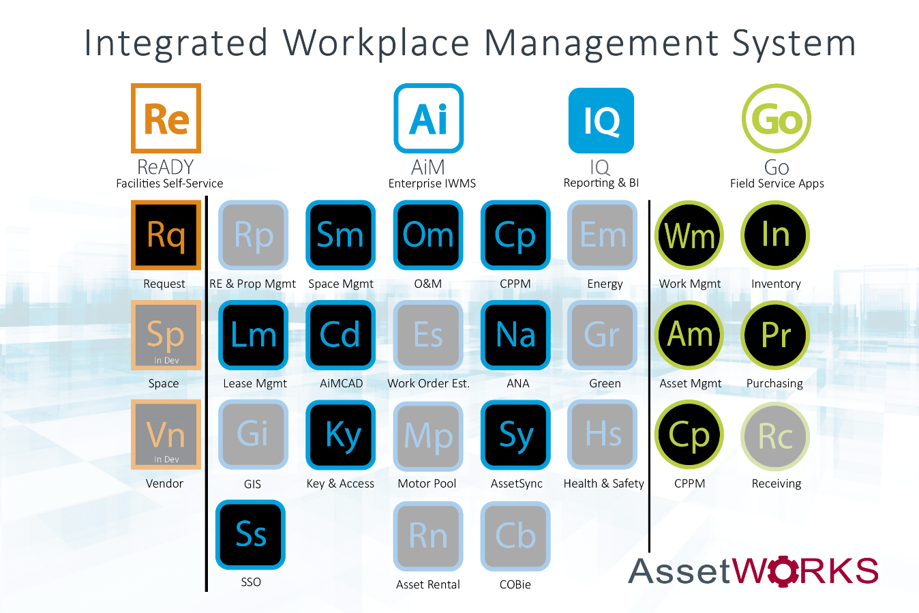Why space management is so important in both Australia and New Zealand

Tony Stack

With one of the lowest population densities in the world, you wouldn’t immediately equate Australia with space management problems! Of course, like New Zealand, upwards of 85% of inhabitants are in urban areas – which, in fact, does put pressure on space managers.
There are many reasons why space management is important for modern industry in Australasia. By definition, space management involves measuring the value of:
- Buildings
- Properties
- Assets
So, what do we mean by each of these?
When we talk about buildings, we refer to a physical structure and plot of land that can be used for any purpose, commercial or residential. Properties managers look after the space within these buildings, making sure it’s used to its full potential – such as achieving full occupancy.
Finally, assets generally refer to the contents of a building and their relative worth. These could be something as simple as fixtures and fittings such as carpets and lighting, or they may be higher-value items, such as computer equipment.
Why space management is important
Space management is important in Australia and New Zealand because it contributes to the overall economy. Generally speaking, we can look at space management in terms of stakeholder wellbeing, value to society and furthering sustainability goals. Whether that’s getting the best from an office or improving facilities at a university, we need a strong space management process.
Improving financial sustainability
Anybody managing a vast property portfolio will have goals for growth or capitalising on existing resources. As we navigate issues such as government funding, overpopulation, or even the long-term impacts of coronavirus, we need to watch every penny.
Space management helps us to assign a monetary value to all buildings in terms of how every area is used. So, let’s picture this in context. We may wish to pursue a capital planning project, such as erecting a new high-rise office block. In theory, we may be able to argue that this will contribute to the local economy, as well as improve our company’s prospects.
But have we overlooked the existing space we have? For example, could we spend less money by refurbishing existing spaces or upgrading technology? This is just one argument for full data visibility.
Hitting our environmental targets
We have both national and global sustainability standards to uphold. For example, some proposed sustainable development goals for Australia are to:
- Ensure better water management
- Achieve an inclusive economy
- Curb human-induced climate change
By adhering to these, we can improve the wellbeing of all stakeholders, while meeting our long-term sustainability goals. Space management helps us to address this by looking at key data such as energy consumption and occupancy.
Creating a better society
As facilities managers, the more we can give back to society, the more sustainable our portfolio of properties can be. For example, if we can use space management to improve higher education institutions, we can contribute to world-leading research. Alternatively, if we can improve existing office spaces, we may be able to increase employment in disadvantaged areas and improve the overall economy.
Australasia has suffered at the hands of the global pandemic. For example, Australian universities, famed for their world-leading innovation and research, are now losing revenue from international students. This puts the pressure on us as space managers to innovate and make our spaces more flexible.
For instance, we may wish to create hybrid learning spaces or co-working environments. This can help us adjust to a new way of life while encouraging a flourishing economy.
The challenges modern space managers face today
Whatever the property portfolio, be it offices or a group of higher education institutions, space managers face the same problems. By overcoming these obstacles, we can solve funding problems, alleviate inter-departmental tensions, promote sustainability and reward stakeholders.
Lack of visibility across the entire inventory
Growing property portfolios become increasingly more difficult to manage. This may present as gaps in facilities managers’ knowledge. If they cannot identify every building and asset, they cannot accurately present costs or forecast for the future.
No compatibility between departments
Many stakeholders may wish to request information on properties that they simply don’t have the skills to understand. For example, a request may involve printing out a computer aided design which does not mean much in isolation to a non-CAD expert.
Data from multiple sources
Just as facilities managers may be overseeing many properties, they may also have to deal with several managers or suppliers. For example, there may be multiple suppliers of gas, electricity, and water to a broad property portfolio, making it difficult to get an idea of running costs and space management.
Absence of graphical space data
Quite simply, if we don’t know what space we have, we cannot maximise it to its full potential! This absence of data may be down to lack of communication between departments, or incompatibility with tech.
How can we overcome these challenges?
Many of the problems that come with managing large property portfolios align with people themselves. This is where space management software can help – drawing on data to make forecasts, prevent errors and support capital planning projects.
Integrating CAD information
The best way to understand how we’re using our assets is to measure by square footage. To do this, we can integrate the data with computer aided design, presenting the bare facts around how every inch is used.
This is important because it clarifies income and outgoings for everybody – not just those who are familiar with computer aided design. In turn, we can identify where a space may not be being used to its full potential, like a lecture hall, and spot new opportunities.
Aggregating data from multiple silos
If you’ve got information from energy suppliers, tenants, or any other stakeholders, you’ll need to understand how these affect bottom lines. AssetWorks’ space management software helps to centralise all property, building and asset data into one place. Visualise everything from a laptop in a computer room to a large set of offices or student accommodation – and everything in between.
Keeping everybody in the loop
Once again, people are the key to successful space management, and we can use software to keep them informed. Without it, we may not have access to the right contact information – leading to delays in everything from customer service to emergencies. Our fully integrated dashboard informs all relevant stakeholders at every stage in the space management process.
Making decisions with data
Funding constraints may present conflict for many different property portfolios – for example, higher education institutions. By collating all data in one place, space managers can make a business case for new development projects. Department managers will be able to see where essential funds need to be allocated, which is particularly important for stretched institutions such as universities.
Why space management is important: the takeaways
In summary, strong space management involves getting more value out of our existing spaces, adapting them for new needs, or expanding them in line with customer demand.
We need to revolutionise modern-day space management to overcome the problems that Australasian societies face:
Population density in highly urban areas
With higher demand for university places or more talent looking for jobs in city offices, we need to make sure our spaces can meet these challenges.
Changing technology
Space management isn’t always about buildings or properties, but the assets within them. In modern-day Australasia, many of these assets are tech-focused, and may change at a moment’s notice. With full visibility over our assets, we can determine which ones will have a longer lifespan, and where new investments can help stakeholders.
Sustainability goals
We’re seeing increasing pressure from local governments and global organisations to act responsibly. Space management software helps us to make informed decisions about how a space is used, in particular, with energy consumption. We can make changes to ensure that no energy is wasted, and that all areas achieve full occupancy.
Human error
Many of the problems with modern-day portfolio management stem from human error. Software can help us to stay in contact with all authorised stakeholders, and update information in real-time.
The pandemic has changed the way Australasia will operate
We’re seeing this already in cases such as the higher education space. With a lack of revenue from international students, universities are having to turn to hybrid methods. Effective space management helps us to take a more flexible approach, which can benefit financial bottom lines and all stakeholders.
Strong software helps to unite people in their mission to get the best from their space. Be they facilities managers, engineers, or investors, they can all make informed decisions with accurate data. We can take this further with an Integrated Workplace Management System.
Start seeing the benefits of space management in action
Whatever your industry, you can benefit from seeing your data in one place. Save money, reallocate staff and get the best from the assets you have available to you. Get in touch with AssetWorks to request a demo today.
Subscribe to AssetWorks' Blog & Newsletter
We send out periodic updates to our facilities community.
Read On

What to Look for in a Facilities Management Software Solution
Not all facilities management software solutions are created equal. With a vast array of options...
Learn more arrow_forward
Three Keys to Effective Space Management
Let’s talk about space management.
Wait a second. I hear the lightsabers firing up already.
Please...
Learn more arrow_forward
CAFM vs. IWMS - Your Guide to an Informed Decision
Does your campus need a Computer Aided Facilities Management (CAFM), or an Integrated Workplace...
Learn more arrow_forward

